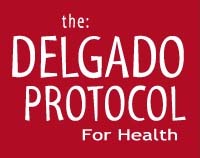How To Reverse Estrogen Deficiency Safely and Effectively
Estrogen is a female hormone that is essential for a woman to look and feel feminine. Estrogen levels can easily fall out of balance and factors such as menopause, eating disorders, childbirth and the birth control pill can all lead to an estrogen deficiency. Low estrogen levels can cause a wide-range of symptoms, the most common of which include: mental fogginess, depression, forgetfulness, moodiness, anxiety, insomnia, loss of sex drive, hot flashes, and night sweats. Low estrogen also increases the risk for cardiovascular disorders, heart disease, and osteoporosis. Although an estrogen deficiency is easily fixed through hormone replacement therapy (HRT), it is important that you follow certain guidelines in order to maximize its efficacy, and to avoid troublesome health-effects.
Estrogen Replacement Therapy Risks and Side-Effects
 Estrogen replacement therapy has a wide range of side-effects and risks associated with it. Some of the most common side-effects include: bloating, weight gain, loss of libido, acne, nausea, breast tenderness and swelling, headaches, indigestion, vaginal bleeding, and mood changes. Estrogen replacement therapy may also increase the risk for breast cancer, blood clots, heart attack, heart disease, liver disease, and stroke.
Estrogen replacement therapy has a wide range of side-effects and risks associated with it. Some of the most common side-effects include: bloating, weight gain, loss of libido, acne, nausea, breast tenderness and swelling, headaches, indigestion, vaginal bleeding, and mood changes. Estrogen replacement therapy may also increase the risk for breast cancer, blood clots, heart attack, heart disease, liver disease, and stroke.
Estrogen Replacement Therapy Done Safely
Estrogen replacement therapy can be highly beneficial, safe and void of troublesome side-effects, so long as you adhere to certain guidelines. First off, it should only be taken for the correct reasons (to alleviate menopause symptoms, to restore hormones in anorexics etc.) and it should always be done under the supervision of a healthcare professional. The practitioner should measure all three major estrogens (estradiol, estrone and estriol), as well as progesterone and testosterone levels prior to starting therapy, and hormones should be reassessed at regular intervals throughout HRT. Estrogen replacement therapy should be taken for the minimum amount of time necessary, and the lowest effective dose should be used.
Bioidentical Hormone Replacement Therapy (BHRT)
Conventional HRT uses synthetic hormones which can confuse the body and lead to unnecessary side-effects. Bioidentical hormone replacement therapy, (BRHT), on the other hand, uses hormones that are molecularly identical to the hormones found in the human body, which helps to maximize safety and minimize side-effects. BRHRT also differs from conventional HRT because the hormones are formulated by a compounding chemists, and doses are tailored to each user’s particular requirements (as opposed to the standardized formulas used in HRT).
The Importance of Adding Progesterone
When estradiol (the most potent estrogen, that is used in birth control and most conventional HRT) is given, it should always be augmented with progesterone. This is important because progesterone counteracts many of the negative effects and risks associated with estradiol. In fact, the increased breast cancer risk associated with estrogen replacement therapy is primarily caused because the estradiol doses given were too high, and they were not properly balanced with progesterone. It’s worth noting that progesterone needs to be given even in women who have had a hysterectomy. Doing so will help to prevent painful breasts, nervousness, irritability and the other side-effects that often show-up during post-surgery treatment.
Estrogen Delivery Methods
Bioidentical estrogen replacement therapy is safest when the delivery method is transdermal (through the skin). The problem with oral estrogen is that it needs to pass through your liver before it enters your bloodstream, and the chemical makeup of it is altered in the process. Transdermal estrogen on the other hand, is absorbed directly through the skin, and into the bloodstream, with its original chemical structure kept intact. Transdermal estrogen comes in both gel and cream form and is typically applied to the arm and/or shoulder. Estrogen gel is superior to estrogen cream because it has a superior ability to penetrate the skin (it’s approximately 5 to 10 times more absorbable).
Progesterone Delivery Methods
There are many progesterone products available on the market, many of which (including those found in the birth control pill) are synthetic derivatives of progesterone. These synthetic progesterone’s are typically less safe than natural progesterone’s and are not recommended.
It is better to have the natural or near natural progesterone, which is generally given orally or vaginally. Finally, if given a choice between the two delivery options, intra-vaginal is recommended because it is absorbed better.
Information for this article was provided by Dr. Thierry Hertoghe: http://www.hertoghe.eu/en/
To watch the video to which this article was based off of: https://www.youtube.com/watch?v=L-0_wCYtg3s
Additional References
https://www.ncbi.nlm.nih.gov/pmc/articles/PMC3127562/
http://www.cemcor.ubc.ca/resources/cyclic-progesterone-therapy
https://www.ncbi.nlm.nih.gov/pmc/articles/PMC2782667/
http://www.mayoclinic.org/diseases-conditions/postpartum-depression/basics/causes/con-20029130





